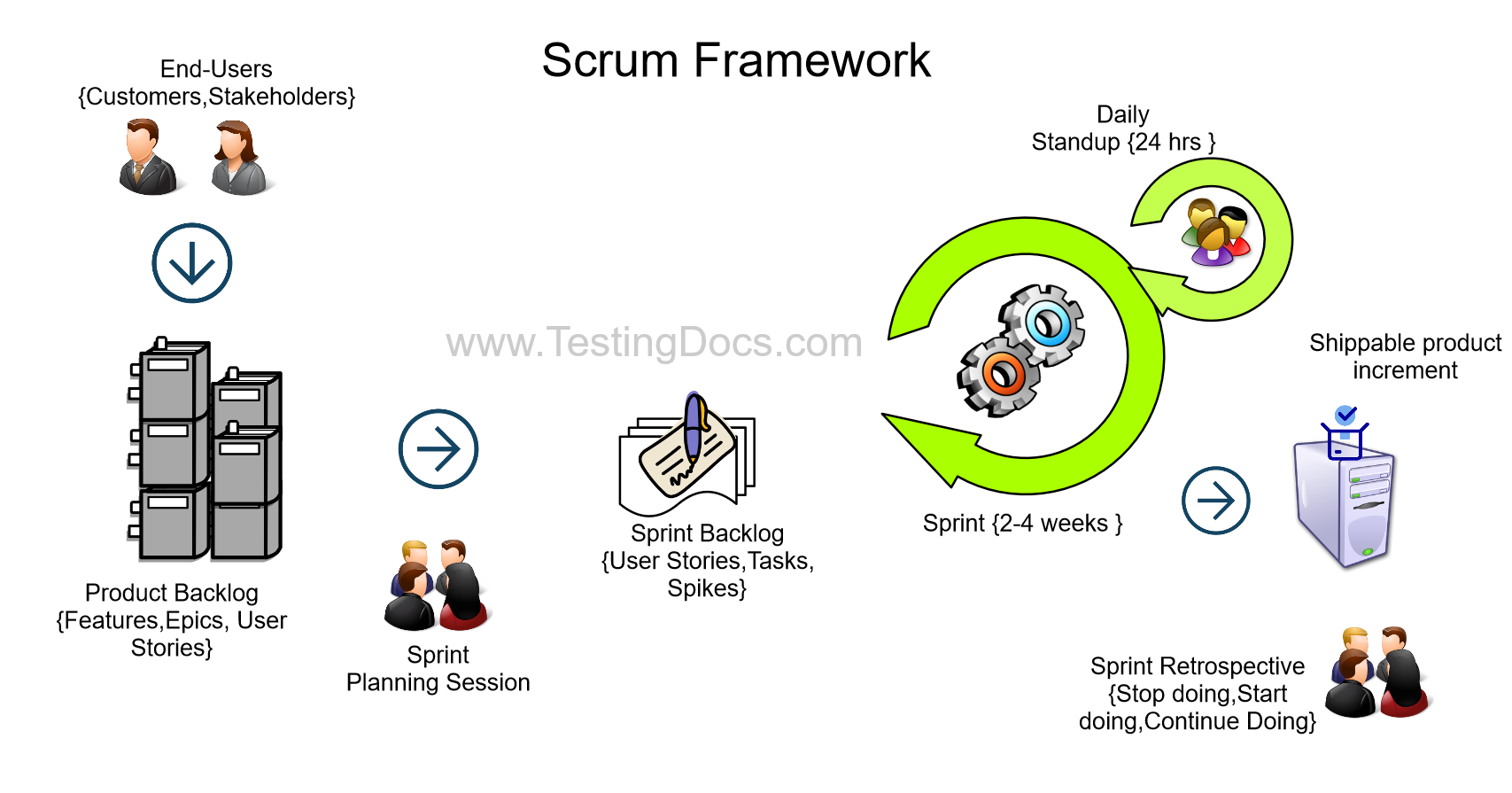Agile Scrum Meetings
Introduction
In this tutorial, we will discuss different types of Agile Scrum meetings. Some of the important meetings in the Scrum framework are as follows:
- Inception Meeting
- Elaboration
- Sprint planning
- Story Review Session
- Backlog Grooming
- Daily Standup meeting
- Demo, Sprint Review, Sign off
- Sprint Retrospectives
Inception meeting
Work is identified as part of an inception meeting. At this point, the work may be a very large scale, and will likely require breakdown and further analysis, a product backlog with the initial epics, stories would be created.
Elaboration
When the work is likely to be scheduled for an upcoming sprint, the analyst begins a breakdown and further analysis of the product backlog identified in the value increment planning meeting. In this stage, the analysis is working with technical members of the scrum team to refine the created stories and potentially break them into multiple stories if they are too large.
Sprint Planning
Stories are prioritized and are presented and aligned with the sprint goals for the upcoming sprint. The scrum team agrees to the total scope being added to the sprint and establishes any story dependency needs. Stories are added to the backlog for the sprint.

Story Review Session
Once a story has been refined to a degree where the analyst feels there is enough detail to play the story, the story is brought to a review session with members of the scrum team to ensure that it can be played, and is well understood. During this meeting, the analyst works with the delivery team to agree and further refine the acceptance criteria. The story estimate may be revised by the scrum team if the initial estimates were not accurate.
Backlog Grooming
Product Owner, BA, and the scrum team meet with the objective to help ensure that the product backlog is populated with relevant user stories. They will help identify any missing or irrelevant user stories, dependencies, epic stories, etc
Daily Standup
It is a brief communication and planning held daily in which scrum team members come together to evaluate the health and progress toward completing their sprint commitments.
- What have they completed since the last daily standup?
- What do they plan to complete until the next daily standup?
- Any impediments, or items standing in their way from completing intended work?
Story Kick-off
The developer is assigned a story and briefly meets with the Analyst and QA to ensure the story is well understood. Development ensues, and the developer constructs story acceptance criteria and coordinates on testing with QA as elements of the story are completed.
Demo & Code Review
The user story is deemed complete by development and walked through with the analyst before the developer moves to the next story. The code associated with the story is reviewed before integration with the mainline code branch.
Sprint Review & Signoff
BA/Product owner reviews the story for completeness and acceptance. The story is demonstrated along with the other work that was accomplished during a sprint.
Sprint Retrospective
The retrospective is a regular meeting session usually held at the end of each sprint. The scrum team along with the Scrum master and product owner discusses the following items:
- what worked well in the last sprint
- what didn’t work well in the last sprint
- areas of improvement moving forward
Scrum Framework
To know more about Scrum:
https://www.testingdocs.com/agile-software-development-model/





